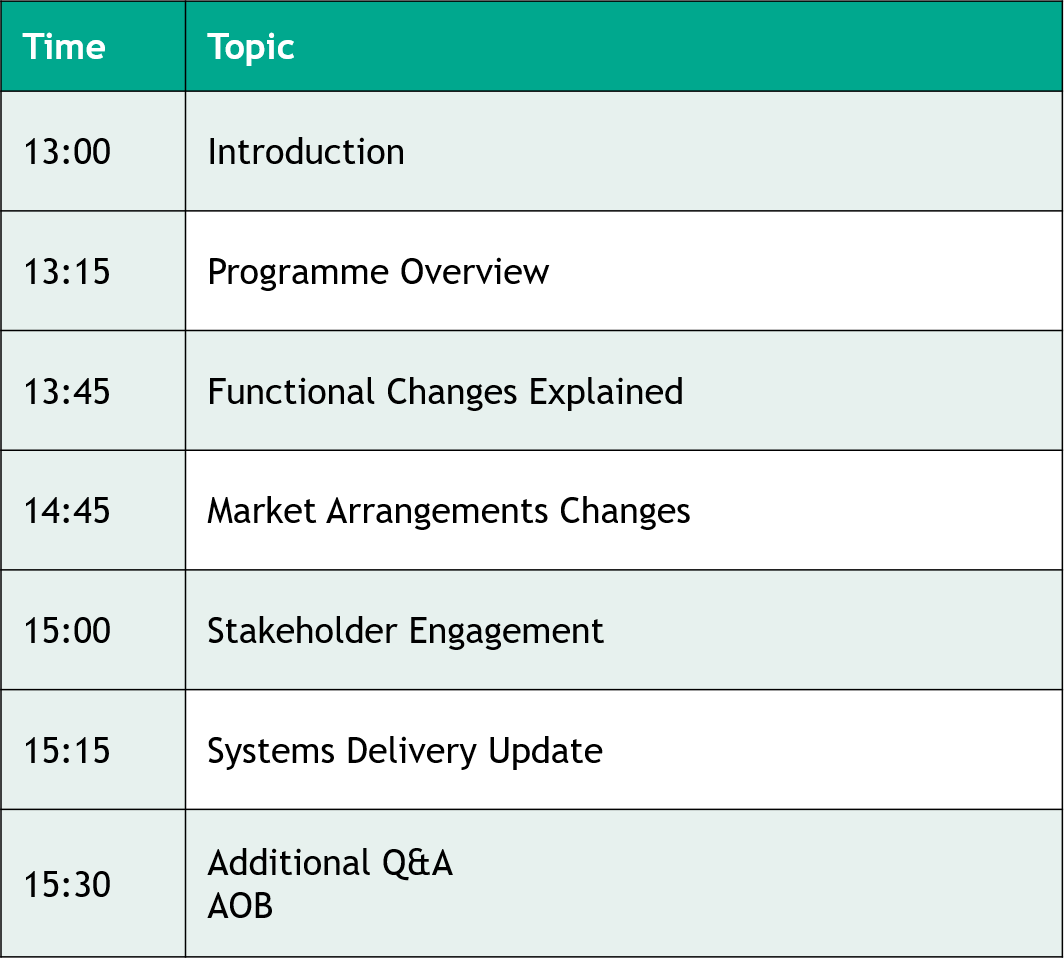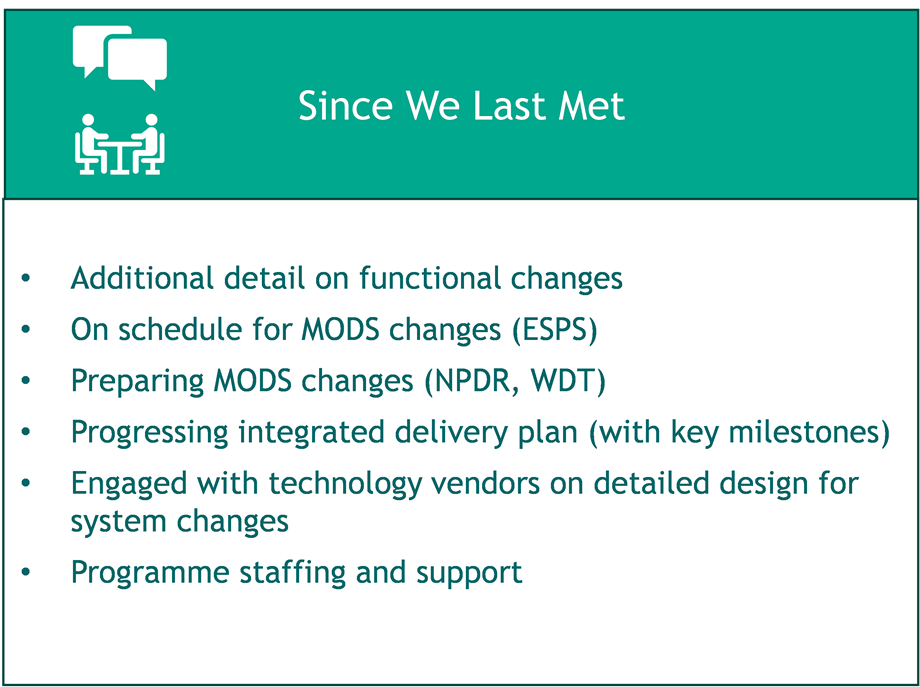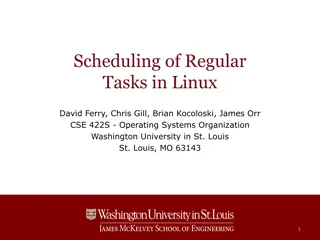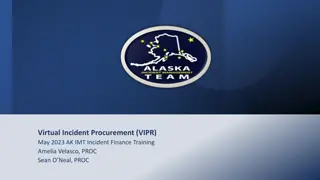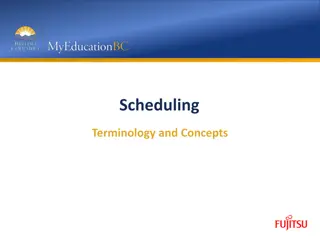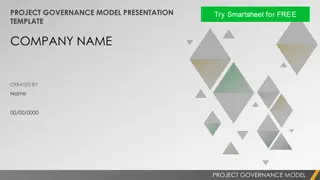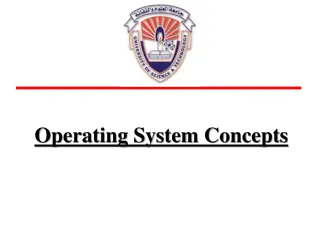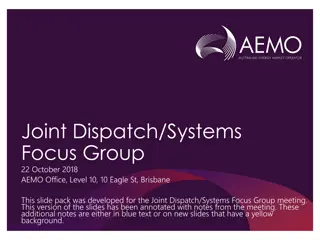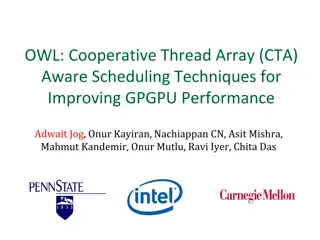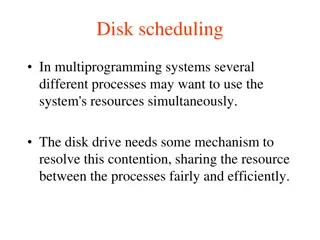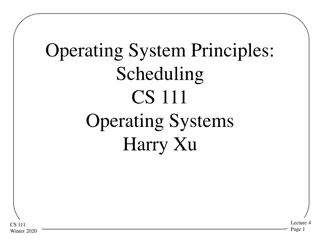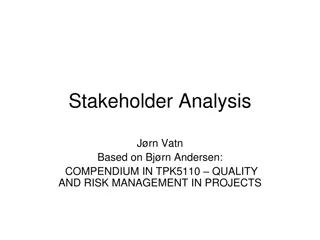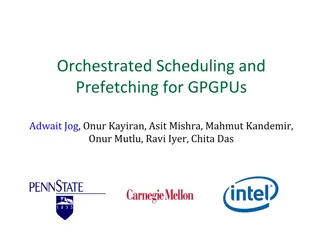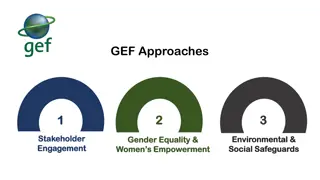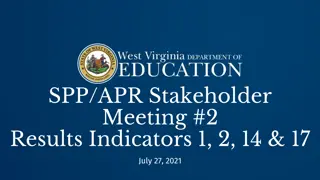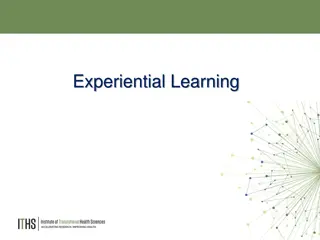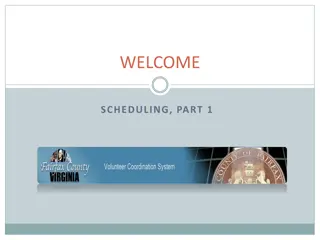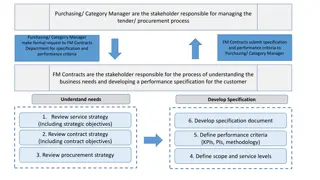Scheduling & Dispatch: Stakeholder Engagement
Scheduling & Dispatch Programme, functional changes, market arrangements, and stakeholder engagement. Join the workshop to stay informed and engage in discussions.
Download Presentation

Please find below an Image/Link to download the presentation.
The content on the website is provided AS IS for your information and personal use only. It may not be sold, licensed, or shared on other websites without obtaining consent from the author.If you encounter any issues during the download, it is possible that the publisher has removed the file from their server.
You are allowed to download the files provided on this website for personal or commercial use, subject to the condition that they are used lawfully. All files are the property of their respective owners.
The content on the website is provided AS IS for your information and personal use only. It may not be sold, licensed, or shared on other websites without obtaining consent from the author.
E N D
Presentation Transcript
Scheduling & Dispatch Stakeholder Engagement Industry Workshop 06 September 2023 This presentation provides an update on the Scheduling & Dispatch Programme. Achievable Valuable Simple
Scheduling & Dispatch: Industry Workshop (September 2023) Agenda for today s workshop Time Topic Since We Last Met 13:00 Introduction 13:15 Programme Overview Additional detail on functional changes On schedule for MODS changes (ESPS) Preparing MODS changes (NPDR, WDT) Progressing integrated delivery plan (with key milestones) Engaged with technology vendors on detailed design for system changes Programme staffing and support 13:45 Functional Changes Explained 14:45 Market Arrangements Changes 15:00 Stakeholder Engagement 15:15 Systems Delivery Update Additional Q&A AOB 15:30
Scheduling & Dispatch Programme Industry Outreach Why Are We Here? We are here is to provide information about the ongoing work with the SDP initiatives and the impact on the market participant community. We will provide a view of the programme s drivers, functional details, structure, timelines, and stakeholder engagement. Inform We will discuss the functional changes and how this impacts you and your portfolio. We will discuss the formal arrangement changes, stakeholder management, and the delivery schedule. We are happy to field all questions and we may not be able to answer all of them today. Discuss We are here to listen. What are you thoughts on the SDP, the functional details and the impacts to your business? What questions do you need answers to? What clarity do you need? Listen Ask We will ask for your participation throughout we are better together.
Scheduling & Dispatch Programme Industry Workshop Setting Expectations Meeting Rules 1. Engage: actively listen and ask questions. This session is for you. 2. Show Courtesy: allow everyone the time and space to participate in the discussion. Don t talk over another speaker. 3. Scope Discipline: maintain focus on SDP. No specific technology discussion today.
Scheduling & Dispatch Programme Overview Key Principles SDP Objective & Drivers Scope of SDP To enhance and improve the technology and capability of scheduling and dispatch in Ireland and Northern Ireland. This is driven by market participant needs, the EU Clean Energy Package mandates, and in support of the broader goals of renewables and System Non Synchronous Penetration (SNSP) penetration targets. For this complex programme One component of the broader SOEF programme. 1. SDP_001: Operation of non-priority dispatch of renewables (NPDR) 1. Be pragmatic about solution pathways. 2. SDP_002: Energy Storage Power Station (ESPS) integration 2. Solve the immediate and urgent problems at hand. 3. SDP_003: Fast Frequency Response (FFR) 4. SDP_004: Wind/solar dispatchability improvements Clean Energy Package requirements NPDR treatment 3. Don t allow perfect to be the enemy of good. 5. SDP_005: Reserve services scheduling and dispatch Ireland and Northern Ireland Government renewables targets for the 80%/70% total renewable energy and 95+% system non-synchronous penetration (SNSP) on an instantaneous basis. 6. SDP_006: Synchronous condenser scheduling and dispatch 4. Communicate early and often to all stakeholders. Delivery Groupings 5. Maintain support of industry. Market Participant requests for certainty on treatment of renewable assets, batteries revenue certainty. 6. Actively manage multidisciplinary delivery team. Group 1 Group 2 Market Participant requests for improvement in re-balancing and re-dispatching (prevailing weather). SDP_001 SDP_003 SDP_002 SDP_005 Achievable Valuable Simple SDP_004 SDP_006 Detailed Design Readiness and Rollout Implementation SDP Group 1 Go-Live SDP Timeline Analysis Today TBC
Stakeholder Engagement: Industry Workshop Programme Structure A programme structure consisting of 5 workstreams has been put in place for Phases 2-5 Dedicated S&D manager and team in place Resources deployed across 5 workstreams: Programme Management Dedicated PM lead for SDP, coord. w/ Head of Future Markets External support provided by Accenture (programme management) and Market Reform (markets expertise) Support to the Programme is being provided from across EirGrid & SONI e.g. TSO and MO Operations, IT Central & Market Arrangements Focus on changes to Grid Code, TSC, CMC as a result of SDP changes. EirGrid led, leveraging existing MOD processes External Stakeholder Engagement & Readiness Engaging, supporting, and measuring external readiness. Continuous engagement via bilateral and group meetings. Key principle: stay engaged! Operational Capability Internal business preparation for enabling the SDP changes. Systems Delivery All aspects of systems design, development and rollout. Participant connectivity, data readiness, and go-live.
SDP001 SDP_001: NPDR Units Treatment of Non-Priority Dispatch Renewables (NPDR) NPDRs will, insofar as possible, be treated like thermal generator units for energy balancing. NPDRs will be subject to constraint and curtailment with priority dispatch units. Summary Priority Dispatch renewable generators continue under existing arrangements and may choose to re-register as NPDR Units. Functional Component What s New or Changed Registration and Input Data Generator ramp rates are considered to be infinitely high NPDRs will submit TOD, COD, PNs and forecasts (which can then be used in the TSO forecasting process and in scheduling) Mandated zero price for Startup and No-Load Scheduling and Dispatch NPDRs will be scheduled economically based on TOD/COD/PNs (in conjunction with all other units) NPDR dispatch by the Control Rooms will be based on Merit Orders derived from scheduling consistent with thermal units NPDRs will always have a control setpoint in place and be subject to active power control Pricing Instruction profiling will take into account Constraint, Curtailment and Merit Order (MWOF) instructions for NPDRs MWOF instructions and subject to continuous open acceptance until the next adjacent MWOF instructions Prices for MWOF actions will be based on submitted COD Settlement Settlement will be as for conventional units. One special note is the Fixed Cost Payment or Charge will always be zero, due to the mandated zero value for start-up and no-load costs. Reporting Data for NPDR Units will be integrated into existing reports. No material changes to any existing report. 7
SDP001 SDP_001: Scheduling Approach Treatment of Non-Priority Dispatch Renewables (NPDR) Renewable forecasts Control centre engineers will be able to better utilise external forecasts from vendor and/or availability submitted by Participants via the MPI Additional flexibility for control centre engineers to enable greater control of weighting and blending of forecasts from different forecast vendors / participant-submitted availability Scheduling NPDR units will be scheduled based on submitted COD, TOD, and PN (and will have zero start-up costs and no-load cost) NPDR units will be considered ON where their generation forecast is > 0 Dispatch Given the volume of NPDR Units, they will be grouped within control room online merit orders, grouped into price bands Control centre engineers will be able to select constraint, curtailment or merit order (MWOF) actions 8
SDP001 SDP_001: Implications for Instruction Profiling/QBOA Treatment of Non-Priority Dispatch Renewables (NPDR) Profiling of wind/solar units is currently summarised as follows: a) FPN = real-time availability b) Constraints and curtailment are always dec actions and profile to the lower of their MW target and availability c) Profiles for constraints and curtailment (LOCL, CURL) ramp instantaneously d) Constraints and curtailments can be active simultaneously and are profiled in order of issuance e) Closure of constraints and curtailment is achieved via issuance of closing instructions (LCLO, CRLO) As a result of SDP_001: o For Priority Dispatch renewables, nothing changes (treatment will continue to be as set out above) o NPDRs will always have an MWOF instruction in place (and may also have curtailment/constraint) The introduction of NPDRs means that these units will be able to receive three types of dispatch instruction: o LOCL, with corresponding LCLO to close o CURL, with corresponding CRLO to close o MWOF, issued by control centres to the lower of a merit order set point and availability For NPDRs, there must be new logic for correct treatment of constraint, curtailment and balancing actions. 9
SDP001 SDP_001: Proposed Instruction Profiling Approach for NPDRs Treatment of Non-Priority Dispatch Renewables (NPDR) We will have the ability to create energy balancing, constraint and curtailment profiles simultaneously and identify the reason for each action to apply the correct price. Continuous open acceptance of MWOFs and pseudo instructions until next adjacent MWOF or pseudo instruction is issued (adjacent meaning not separated by CURL/LOCL). LOCL/CURL/LCLO/CRLO instructions to be profiled as today. Instantaneous ramping for all actions. Energy balancing profiles will be ordered based on effective time of the relevant MWOF 10
SDP001 SDP_001: Example Case for NPDR Instruction Profiling Treatment of Non-Priority Dispatch Renewables (NPDR) Time (minute) 5 6 8 11 19 Type MWOF#1 LOCL CURL MWOF#2 MWOF#3 MW 80 60 50 35 45 120 o=2 FPN 100 o=1 80 o=3 60 o=4 40 o=5 o=7 o=8 20 o=6 5 10 15 25 20 11
SDP001 SDP_001: Day in the life Treatment of Non-Priority Dispatch Renewables (NPDR) COD (PQ pairs [zero fixed costs]) and TOD set selection Physical Notifications (stepwise) Forecast Availabilities Submit NPDR Units transaction data TSO receives/utilises external renewable forecasts For NPDR units, Control Room decisions may result in (a) merit order-derived targets, (b) curtailment, or (c) constraint New profiling logic, to take account of the fact that NPDR Units can be subject to any/all of (a) curtailment, (b) constraint, (c) merit order setpoints TSO determines indicative generation schedules (LTS, RTC, RTD) Indicative schedules are used to derive Inc/Dec Merit Orders Indicative operations schedules are an optimised view at point in time of how demand can be met whilst minimising deviation from PN, and whilst meeting all of the necessary constraints (e.g. reserve, inertia, transmission network capability) Control Room(s) make dispatch decisions (all Units, including NPDRs) Approved setpoints issued to NPDRs (~DIs), via WDT NPDRs always are subject to setpoints from the TSO Pricing and imbalance settlement (based on DIs, PNs and metering) 12
SDP_002: ESPS Units For ESPS units (and we are fundamentally talking about batteries in this SDP), the intention is to provide more control and assurance for market participants in the use of batteries, and great visibility and usefulness of the battery assets to the TSO control Centre engineers, within the Scheduling and Dispatch processes. Summary Functional Component What s New or Changed Registration and Input Data Registration Registration Register as battery units under trading site Minimum and Maximum Storage Capacity (MWh). Maximum Generation (MW)*, Registered Minimum Output (MW)* (*existing) COD Minimum and Maximum Storage Capacity (MWh) (Validation against Registered Min/Max Op Storage Limits) Prior Day End Storage Level (a day ahead view of the storage level in MWh for ESPS Units, which must be able to change on a daily basis in advance. (VTOD, Agreed Proc., App 4) Physical Notifications can have negative MW QTY values (representing charging state). Incremental and Decremental Price and Quantity Curves for Complex and Simple COD are to cover the full operating range from charging (negative MW QTY) to generating (positive MW QTY). Data Validations of Note: Forecast availability profile (>= 0) Forecast minimum output profile (<=0) Forecast minimum stable generation profile (all zero) Start-up, shut-down and no-load costs submitted but mandated to be zero. PNs of zero MW will be interpreted as ON at zero (As opposed to OFF like conventional generators.) 13
SDP_002: ESPS Units For ESPS units (and we are fundamentally talking about batteries in this SDP), the intention is to provide more control and assurance for market participants in the use of batteries, and great visibility and usefulness of the battery assets to the TSO control Centre engineers, within the Scheduling and Dispatch processes. Summary Functional Component What s New or Changed Scheduling and Dispatch ESPS scheduled based on the generator PN ( Follow PN mode) by default. Control Centre Engineers may move them to manual scheduling only when necessary. Note: If a PN (or culmination of PNs violate transmission security constraints, this is a case where PNs would be moved, to relieve the constraint) If an ESPS Unit is dispatched away from its PN, it remains the responsibility of the Market Participant to update the PN and manage the energy available for the ESPS Unit. Scheduling and Dispatch Operators will dispatch ESPS Units back to their PN before resetting to Follow PN mode. A PN feasibility assessment will apply to ESPS PNs. This will occur after submission and only within the control centre. Pending vendor design, Dispatch Instructions for charging may be negative MW QTY. 14
SDP_002: ESPS Units For ESPS units (and we are fundamentally talking about batteries in this SDP), the intention is to provide more control and assurance for market participants in the use of batteries, and great visibility and usefulness of the battery assets to the TSO control Centre engineers, within the Scheduling and Dispatch processes. Summary Functional Component What s New or Changed Pricing ESPS Units can operate below their Minimum Stable Generation (mandated to be zero). They will be Non-Marginal Flagged (as is the case now) if operating at or below their LOL, operating at their HOL, or ramp constrained. (Balancing Market Price Formulation) Non-energy flagging tests will be modified so that they check whether QRTD is non-zero, rather than greater than zero as for conventional Generator Units. Settlement Settlement changes - Decoupling from treatment of pumped storage (affecting various payments/charges), handling negative values (e.g. CTEST), using Min Output as floor for inc QBOA calculations Reporting Additional reports will be included for ESPS Units, to show energy and reserve schedules by reserve type, system wide, in aggregate and individually. Additional note: We are currently investigating how Long Duration Energy Storage can be facilitated by these changes. Much will depend on the commercial and technical discussions on LDES treatment, currently in-flight with the TSOs, RAs, and participants. 15
SDP_002: Day in the life COD (fixed costs=0, PQ pairs to cover entire range from charging to discharging), TOD set selection Physical Notifications (piecewise) Forecast Availabilities (with min stable gen = 0) Operational storage min/max Submit Unit transaction data Amended flagging rules to allow for ESPS units in negative generation range Some minor amendments to settlement equations to allow for negative range for ESPS (treatment will not be based on pumped storage) PN feasibility is tracked and alerted to Control Centres Control Centres respond where follow PN is not appropriate ESPS units are included in Control Centres Merit Orders Control Centre makes dispatch decisions Dispatch decisions deviating from PNs may cause re-evaluation by the party of its ex-ante position Approved DIs issued to ESPS units, via EDIL Pricing and imbalance settlement (based on DIs, PNs and metering)
SDP004 SDP_004: Wind/Solar Dispatchability Improvements Wind/Solar Dispatchability Improvements Summary To improve the rebalancing of intermittent renewables based on changing weather conditions Functional Component What s New or Changed Rebalancing / Redispatch Use weather conditions (in the form of changes in availability) to enable rebalancing of constraint and curtailment to Priority Dispatch and Non-Priority Dispatch Renewable Units Enable Control Centres to utilise existing tools to more effectively apply, relax and remove constraints and curtailments through issuance of control setpoints Reporting Calculation of jurisdictional dispatch down ratio based on real-time availability data for Control Centre awareness Reports including enhanced detail into the standardised reasons for constraint/curtailment decisions 17
SDP_004: What is rebalancing? Why is rebalancing important? Extract from SEM-13-011 CURRENT DEFINITIONS OF CONSTRAINT AND CURTAILMENT: Constraint: If the Control Centre assumed it had control over every price taking generation unit in tie break on the island of Ireland and the security issue presented could only be resolved by reducing the output of one or a small group of price taking generation units in tie break then that reduction is deemed a constraint and logged as such Curtailment: If the Control Centre assumed it had control over every price taking generation unit in tie break on the island of Ireland and the security issue presented could be resolved by reducing the output of any or all of the price taking generation units in tie break then that reduction is deemed a curtailment and logged as such Extract from SEM-13-011 CURRENT APPROACH TO APPLICATION/REMOVAL OF CONSTRAINT AND CURTAILMENT: Application: Active Power Control setpoints are both calculated on the basis of distributing a reduction in output between price taking generation unit in tie break using the Active Power output of each price taking unit in tie break to be curtailed or constrained Removal (part or all): Active Power Control setpoints are calculated on the basis of distributing an increase in output between price taking unit in tie break on a pro-rata basis whilst ensuring that following the removal of a curtailment the Active Power Control setpoint for no unit exceeds any constraint setpoint that was already in place WHAT IS REBALANCING? WHY IS REBALANCING IMPORTANT? Rebalancing is a process by which redistribution of Curtailment or Constraint is performed Discussions with various parties with renewable generator units have confirmed that the current approach to application of Constraint and Curtailment does not take appropriate account of prevailing weather conditions Effective rebalancing should utilise weather conditions (in the form of unit availability, Available Active Power) to regularly redistribute constraint and curtailment to affected renewable units 18
SDP004 SDP_004: Day in the life Wind/Solar Dispatchability Improvements Important: Rebalancing is initiated and enacted via the Control Room(s), where possible. Rebalancing relates to the apportionment of curtailment/constraint across respective units (it does not change the extent of curtailment/constraint overall) Automated Weather conditions change over time Renewable unit availabilities change (telemetry) Control Room(s) Control Room notified of scope for rebalancing Control Room can initiate rebalancing No change to existing approach (although more instructions) Control Room reviews and can approve rebalanced setpoints Approved setpoints issued to affected units Pricing and imbalance settlement (based on DIs, PNs and metering) 19
Stakeholder Engagement: Industry Workshop Code Change Process Trading & Settlement Code 1.Proposal submitted to Mods Committee ahead of scheduled Mods Committee Meeting 2.Proposal presented at Mods Committee Meeting 3.Final Recommendation Report submitted by Mods Committee to RAs 4.RA approval 5.Updated T&SC published Grid Codes 1.Proposal submitted to Grid Code Review Panel (GCRP)/ Joint Grid Code Review Panel (JGCRP) ahead of scheduled GCRP/ JGCRP meetings 2.Proposal presented at GCRP/ JGCRP meetings 3.Public consultation following GCRP/ JGCRP meetings (NI only) 4.Proposal submitted by TSO to RAs 5.RA approval 6.Updated Grid Codes published 20
Stakeholder Engagement: Industry Workshop Code Change Schedule Grid Code Review Panel/ Joint Grid Code Review Panel T&SC Mods Committee Initiative SDP_02 ESPS Integration 19/10/2023 30/11/2023 Feb 2024 (TBC) Feb 2024 (TBC) SDP_01 Operation of Non-Priority Dispatch of Renewables and SDP_04 Wind/Solar Dispatchability Improvements 21
Stakeholder Engagement: Industry Workshop Description of Changes for SDP_002: Energy Storage Power Stations Trading & Settlement Code Registration Will be required to register under a trading site Data submission changes Updates to registration data, COD (including forecasts), TOD Settlement changes - Decoupling from treatment of pumped storage, handling negative values, using Min Output as floor for inc QBOA calculations Grid Codes Data submission changes Minor text updates for clarification 22
Stakeholder Engagement: Industry Workshop Ongoing Stakeholder Engagement Stakeholder Engagement Stakeholder Engagement will continue. We will host more industry-wide workshops and focused sessions for different groups (technical, programme management). Engagement is bi-directional. We need to hear from you! You will hear from us. Bilateral Meetings Industry-Wide Engagement Ongoing bilateral meetings to discuss SDP details. Monthly cadence for Industry workshops Standing placeholder at Market Operator User Group
Stakeholder Engagement: Industry Workshop Meeting with Technology Vendors Meeting with Technology Vendors We understand the importance of meeting with 3rd party technology vendors those that supply the tools, data, and reports for market participants. To date, we have met with one, are scheduled to speak with another, and are scheduling for a third meeting next week. Who We Know Other Vendors - - - Hitachi Energy nMarket BRADY EDIL, Market System EnAppSys (Reporting, Analytics) Other vendors are looking to offer solutions into the SEM. We are fielding questions from them and will keep you informed of any additional contacts.
Stakeholder Engagement: Industry Workshop Contacting SDP To raise an issue or query for the Scheduling & Dispatch Programme: SDP Queries SchedulingandDispatch@Eirgrid.com Information to Provide Contact Your Name Operating Hours 9:00am - 5:00pm IPT (Mon-Fri) Your email & phone number Your organisation Queries received outside of operating hours will be addressed the next business day. Topic of Issue/Query Description of the issue or query Any additional information to aid in understanding the issue or query
Stakeholder Engagement: Industry Workshop Systems Delivery Update SDP Tranche 1 PHASE 3: Implementation PHASE 1 PHASE 5 PHASE 2 Support Detailed Requirements & Design Analysis & Planning PHASE 4: Readiness and Rollout System Delivery Phase Timeline / Milestones Today System Delivery Milestones Solution Pathways identified & High Level Requirements DetailedRequirements Definition completed System Build commences Implementation and Go-Live for SDP Tranche 1 Post Go-Live Hypercare period Vendor Unit Test / FAT Final Design Specifications produced Vendor delivery of code to EirGrid System Test / E2E / User Acceptance Test SDP Initiative Tranche #1 294 Detailed Requirements 22 New / Updated Interfaces SDP_01: Treatment of Non-Priority Dispatch Renewables SDP_02: Energy Storage Power Stations SDP_04: Wind Dispatch Improvement 3 Core Operations Platforms (Up to 11 downstream systems)
Stakeholder Engagement: Industry Workshop Next Steps Next Steps Please provide feedback when you have reviewed and considered the information from today s discussion. Follow-up from any Listen item discussed today. Be on the lookout for the next Industry Workshop, to be scheduled at a monthly cadence.
Stakeholder Engagement: Industry Workshop Actions and Open Questions
SDP: Glossary Term BA BM CC CCT COD CSB DI DRDQ EG EMS ESPS FFR GDX GSP HIS HLR IPO IPQBOA JAPR MI-STL MMS MOL MPI NF NPDR OMS Definition Business Analyst Balancing Market Control Centre Control Centre Tools (LSAT, RMT & VTT) Commercial Offer Data Counterparty Settlement and Billing Dispatch Instruction Dispatch Regime Dispatch Quotient EirGrid / SONI / SEMO Energy Management System Energy Storage Power Station Fast Frequency Response Group Data Exchange Generator Setpoint Historical Information Server High Level Requirements Innovation and Planning Office Instruction Profile Quantity Bid Offer Acceptance Jurisdictional Active Power Ratio MMS to CSB integration Market Management System Merit Order List Market Participant Interface Non-Functional Non-Priority Dispatch of Renewables Unit Outage Management System Term OUI PD RES PIMB PIO PN PS QD QM RMT ROM RSD RT RTQBOA RTU S&D SCADA SDP SEMO SME TOD Definition Operator User Interface Priority Dispatch. Renewable Energy Source Imbalance Price Calculation People and Information Office (IT) Physical Notification Pumped Storage Dispatch Quantity Metered Quantity Ramping Margin Tool Rough Order of Magnitude Reserve Scheduling Dispatch Real Time Real Time Quantity Bid Offer Acceptance Remote Terminal Unit Scheduling and Dispatch Supervisory Control and Data Acquisition Scheduling and Dispatch Programme Single Electricity Market Operator Subject Matter Expert Technical Offer Data Transmission System Operator Counterparty Settlements & Billing Use Case Wind Dispatch Tool Wind Energy Forecast Wind Predictor TSO CSB UC WDT WEF WPRED 29

















